Tutorial: Configure Meta Networks Connector for automatic user provisioning
The objective of this tutorial is to demonstrate the steps to be performed in Meta Networks Connector and Microsoft Entra ID to configure Microsoft Entra ID to automatically provision and de-provision users and/or groups to Meta Networks Connector.
Note
This tutorial describes a connector built on top of the Microsoft Entra user Provisioning Service. For important details on what this service does, how it works, and frequently asked questions, see Automate user provisioning and deprovisioning to SaaS applications with Microsoft Entra ID.
Prerequisites
The scenario outlined in this tutorial assumes that you already have the following prerequisites:
- A Microsoft Entra tenant
- A Meta Networks Connector tenant
- A user account in Meta Networks Connector with Admin permissions.
Step 1: Plan your provisioning deployment
- Learn about how the provisioning service works.
- Determine who will be in scope for provisioning.
- Determine what data to map between Microsoft Entra ID and Meta Networks Connector.
Assigning users to Meta Networks Connector
Microsoft Entra ID uses a concept called assignments to determine which users should receive access to selected apps. In the context of automatic user provisioning, only the users and/or groups that have been assigned to an application in Microsoft Entra ID are synchronized.
Before configuring and enabling automatic user provisioning, you should decide which users and/or groups in Microsoft Entra ID need access to Meta Networks Connector. Once decided, you can assign these users and/or groups to Meta Networks Connector by following the instructions here:
Important tips for assigning users to Meta Networks Connector
It is recommended that a single Microsoft Entra user is assigned to Meta Networks Connector to test the automatic user provisioning configuration. Additional users and/or groups may be assigned later.
When assigning a user to Meta Networks Connector, you must select any valid application-specific role (if available) in the assignment dialog. Users with the Default Access role are excluded from provisioning.
Step 2: Configure Meta Networks Connector for provisioning
Sign in to your Meta Networks Connector Admin Console using your organization name. Navigate to Administration > API Keys.

Click on the plus sign on the upper right side of the screen to create a new API Key.

Set the API Key Name and API Key Description.
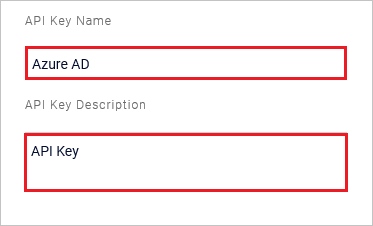
Turn on Write privileges for Groups and Users.
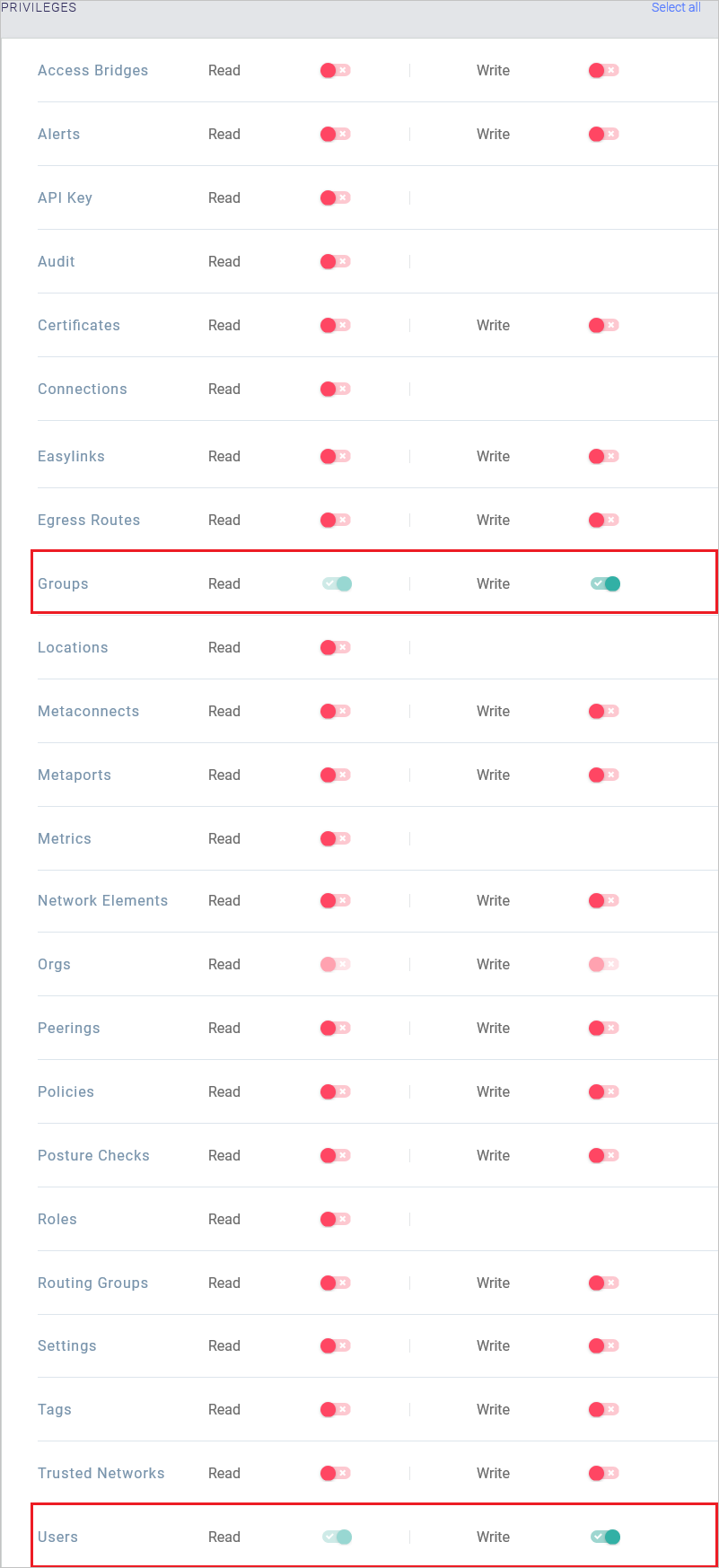
Click on Add. Copy the SECRET and save it as this will be the only time you can view it. This value will be entered in the Secret Token field in the Provisioning tab of your Meta Networks Connector application.

Add an IdP by navigating to Administration > Settings > IdP > Create New.
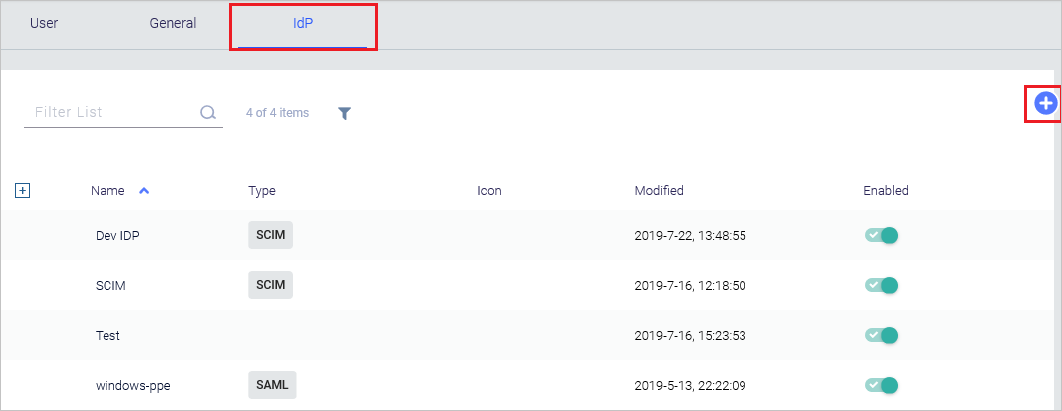
In the IdP Configuration page you can Name your IdP configuration and choose an Icon.
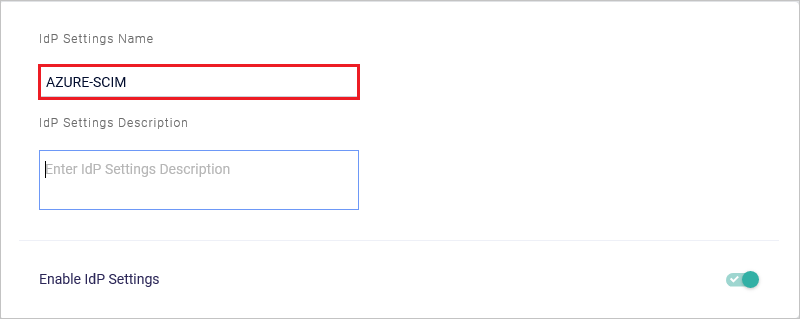

Under Configure SCIM select the API key name created in the previous steps. Click on Save.

Navigate to Administration > Settings > IdP tab. Click on the name of the IdP configuration created in the previous steps to view the IdP ID. This ID is added to the end of Tenant URL while entering the value in Tenant URL field in the Provisioning tab of your Meta Networks Connector application.

Step 3: Add Meta Networks Connector from the Microsoft Entra application gallery
Add Meta Networks Connector from the Microsoft Entra application gallery to start managing provisioning to Meta Networks Connector. If you have previously setup Meta Networks Connector for SSO you can use the same application. However it is recommended that you create a separate app when testing out the integration initially. Learn more about adding an application from the gallery here.
Step 4: Define who will be in scope for provisioning
The Microsoft Entra provisioning service allows you to scope who will be provisioned based on assignment to the application and or based on attributes of the user / group. If you choose to scope who will be provisioned to your app based on assignment, you can use the following steps to assign users and groups to the application. If you choose to scope who will be provisioned based solely on attributes of the user or group, you can use a scoping filter as described here.
Start small. Test with a small set of users and groups before rolling out to everyone. When scope for provisioning is set to assigned users and groups, you can control this by assigning one or two users or groups to the app. When scope is set to all users and groups, you can specify an attribute based scoping filter.
If you need additional roles, you can update the application manifest to add new roles.
Step 5: Configuring automatic user provisioning to Meta Networks Connector
This section guides you through the steps to configure the Microsoft Entra provisioning service to create, update, and disable users and/or groups in Meta Networks Connector based on user and/or group assignments in Microsoft Entra ID.
Tip
You may also choose to enable SAML-based single sign-on for Meta Networks Connector, following the instructions provided in the Meta Networks Connector Single sign-on tutorial. Single sign-on can be configured independently of automatic user provisioning, though these two features complement each other
To configure automatic user provisioning for Meta Networks Connector in Microsoft Entra ID:
Sign in to the Microsoft Entra admin center as at least a Cloud Application Administrator.
Browse to Identity > Applications > Enterprise applications
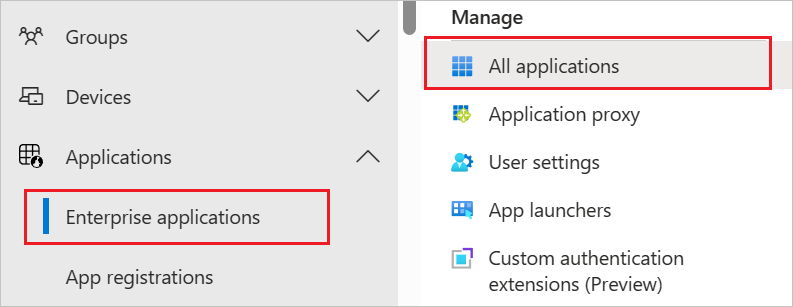
In the applications list, select Meta Networks Connector.
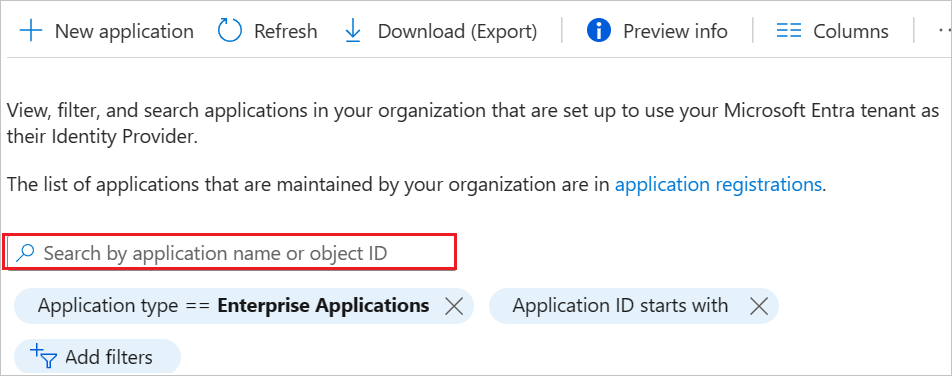
Select the Provisioning tab.

Set the Provisioning Mode to Automatic.

Under the Admin Credentials section, input
https://api.metanetworks.com/v1/scim/<IdP ID>in Tenant URL. Input the SCIM Authentication Token value retrieved earlier in Secret Token. Click Test Connection to ensure Microsoft Entra ID can connect to Meta Networks Connector. If the connection fails, ensure your Meta Networks Connector account has Admin permissions and try again.
In the Notification Email field, enter the email address of a person or group who should receive the provisioning error notifications and check the checkbox - Send an email notification when a failure occurs.

Click Save.
Under the Mappings section, select Synchronize Microsoft Entra users to Meta Networks Connector.

Review the user attributes that are synchronized from Microsoft Entra ID to Meta Networks Connector in the Attribute-Mapping section. The attributes selected as Matching properties are used to match the user accounts in Meta Networks Connector for update operations. If you choose to change the matching target attribute, you will need to ensure that the Meta Networks Connector API supports filtering users based on that attribute. Select the Save button to commit any changes.
Attribute Type Supported for filtering Required by Meta Networks Connector userName String ✓ ✓ active Boolean phonenumbers[type eq "work"].value String name.givenName String ✓ name.familyName String ✓ Note
phonenumbers value should be in E164 format. For example +16175551212
Under the Mappings section, select Synchronize Microsoft Entra groups to Meta Networks Connector.

Review the group attributes that are synchronized from Microsoft Entra ID to Meta Networks Connector in the Attribute-Mapping section. The attributes selected as Matching properties are used to match the user accounts in Meta Networks Connector for update operations. If you choose to change the matching target attribute, you will need to ensure that the Meta Networks Connector API supports filtering users based on that attribute. Select the Save button to commit any changes.
Attribute Type Supported for filtering Required by Meta Networks Connector displayName String ✓ ✓ members Reference To configure scoping filters, refer to the following instructions provided in the Scoping filter tutorial.
To enable the Microsoft Entra provisioning service for Meta Networks Connector, change the Provisioning Status to On in the Settings section.

Define the users and/or groups that you would like to provision to Meta Networks Connector by choosing the desired values in Scope in the Settings section.

When you are ready to provision, click Save.

This operation starts the initial synchronization of all users and/or groups defined in Scope in the Settings section. The initial sync takes longer to perform than subsequent syncs, which occur approximately every 40 minutes as long as the Microsoft Entra provisioning service is running. You can use the Synchronization Details section to monitor progress and follow links to provisioning activity report, which describes all actions performed by the Microsoft Entra provisioning service on Meta Networks Connector.
Step 6: Monitor your deployment
Once you've configured provisioning, use the following resources to monitor your deployment:
- Use the provisioning logs to determine which users have been provisioned successfully or unsuccessfully
- Check the progress bar to see the status of the provisioning cycle and how close it is to completion
- If the provisioning configuration seems to be in an unhealthy state, the application will go into quarantine. Learn more about quarantine states here.
Change Log
04/06/2022 - Added support for phoneNumbers[type eq "work"].value. Removed support for emails[type eq "work"].value and manager . name.givenName and name.familyName made required attributes.
More resources
- Managing user account provisioning for Enterprise Apps
- What is application access and single sign-on with Microsoft Entra ID?
Next steps
Feedback
Coming soon: Throughout 2024 we will be phasing out GitHub Issues as the feedback mechanism for content and replacing it with a new feedback system. For more information see: https://aka.ms/ContentUserFeedback.
Submit and view feedback for